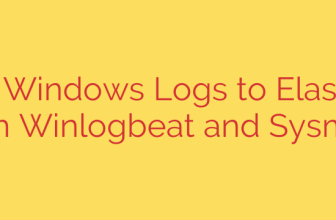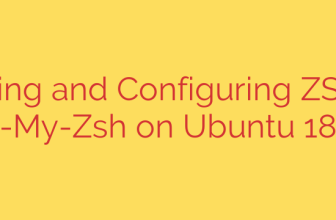
Beyond the Cloud: How Distributed AI Networking is Forging a Smarter, Faster Future
Artificial intelligence is no longer a futuristic concept; it’s a foundational technology that powers everything from our smart assistants to complex industrial systems. For years, the dominant model for AI has been centralized. Data is collected from countless devices, sent to a powerful central cloud server for processing, and the results are sent back. While effective, this model is beginning to show its limitations in a world demanding real-time responses and ironclad data privacy.
A powerful new paradigm is taking hold: distributed AI networking. This transformative approach is moving intelligence away from the central cloud and closer to where the data is actually created—a concept often called “the edge.” Instead of relying on a single, distant brain, distributed AI creates a network of smaller, localized intelligent systems that can think and act independently, fundamentally changing how we deploy and interact with AI.
The Cracks in the Centralized Model
The traditional cloud-centric approach to AI, while revolutionary in its time, faces several critical challenges in today’s fast-paced environment. Understanding these limitations is key to appreciating the shift toward a distributed architecture.
- Latency Delays: The physical distance between a device and a data center creates a time lag, or latency. For applications like self-driving cars or real-time robotic surgery, even a millisecond delay can have serious consequences.
- Bandwidth Bottlenecks: Constantly streaming massive amounts of raw data to the cloud is expensive and consumes enormous bandwidth. This is particularly problematic for video surveillance, industrial sensors, and other data-heavy applications.
- Privacy and Security Risks: Funneling all sensitive data to a single location creates a high-value target for cyberattacks. A single breach can expose a massive trove of information. Furthermore, regulations like GDPR make transmitting personal data across borders increasingly complex.
- Reliability Issues: If the connection to the central server is lost, the entire system can fail. This single point of failure is a significant risk for mission-critical operations.
What is Distributed AI Networking?
Distributed AI networking flips the traditional model on its head. Instead of sending raw data to the cloud for analysis, the AI models and processing power are brought directly to the edge devices. These devices—which can be anything from a smartphone or a smart camera to a sensor on a factory floor—can process data locally.
Think of it as the difference between having one central library for the entire world versus having a local library branch in every town. The local branches can handle most requests instantly without needing to contact the main hub.
In this model, devices process data on-site and only send essential information, insights, or model updates to the central network. This is often achieved through technologies like federated learning, where AI models are trained across multiple decentralized devices without exchanging the raw data itself, preserving privacy while still allowing the collective model to learn and improve.
The Core Benefits of a Distributed AI Network
Adopting a distributed architecture offers significant advantages that directly address the shortcomings of centralized systems.
- Drastically Reduced Latency: By processing data locally, decisions can be made in near-real time. This is a game-changer for autonomous vehicles that need to react instantly to road conditions, or for augmented reality applications that require seamless interaction with the physical world.
- Enhanced Data Privacy and Security: This is one of the most compelling benefits. Sensitive personal or proprietary data never has to leave the local device or premises. This minimizes the risk of exposure during transmission and helps organizations comply with strict data privacy regulations.
- Increased Reliability and Resilience: A distributed network is not dependent on a constant connection to a central server. Edge devices can continue to operate intelligently even if the primary network connection is down, creating a more robust and fault-tolerant system.
- Significant Cost Savings: By reducing the amount of data that needs to be sent to and stored in the cloud, organizations can dramatically lower their bandwidth and data center costs.
Addressing the Challenges: Security at the Edge
While a distributed model enhances data privacy, it also introduces new security considerations. With intelligence spread across potentially thousands of devices, the attack surface expands. Each edge device is a potential entry point for malicious actors.
Securing a distributed AI network requires a modern, proactive approach. Here are a few essential security tips:
- Implement a Zero-Trust Architecture: In this model, no device or user is trusted by default. Every connection and data request must be continuously verified, significantly reducing the risk of unauthorized access.
- Ensure End-to-End Encryption: All data, whether it’s being processed on the device or transmitted as an insight, must be encrypted to protect it from being intercepted.
- Deploy Robust Device Management: It is crucial to have a system for managing and updating the software and firmware on all edge devices. Regularly patching vulnerabilities is one of the most effective ways to secure the network.
- Monitor Network Behavior: Use AI-powered tools to monitor the network for unusual activity. Anomaly detection can quickly identify a compromised device before it can cause widespread damage.
The Future is at the Edge
The shift to distributed AI networking doesn’t mean the cloud is obsolete. Rather, it signals an evolution toward a more balanced, hybrid model. The cloud will continue to play a vital role in training complex AI models and aggregating high-level insights, while the edge handles the immediate, real-time processing.
From smart cities optimizing traffic flow to smart factories predicting maintenance needs, distributed AI is the key to unlocking the next generation of intelligent, responsive, and secure applications. It represents a fundamental move toward an AI that is not just in the cloud, but all around us, embedded in the very fabric of our digital world.
Source: https://feedpress.me/link/23532/17181401/the-new-benchmark-for-distributed-ai-networking








